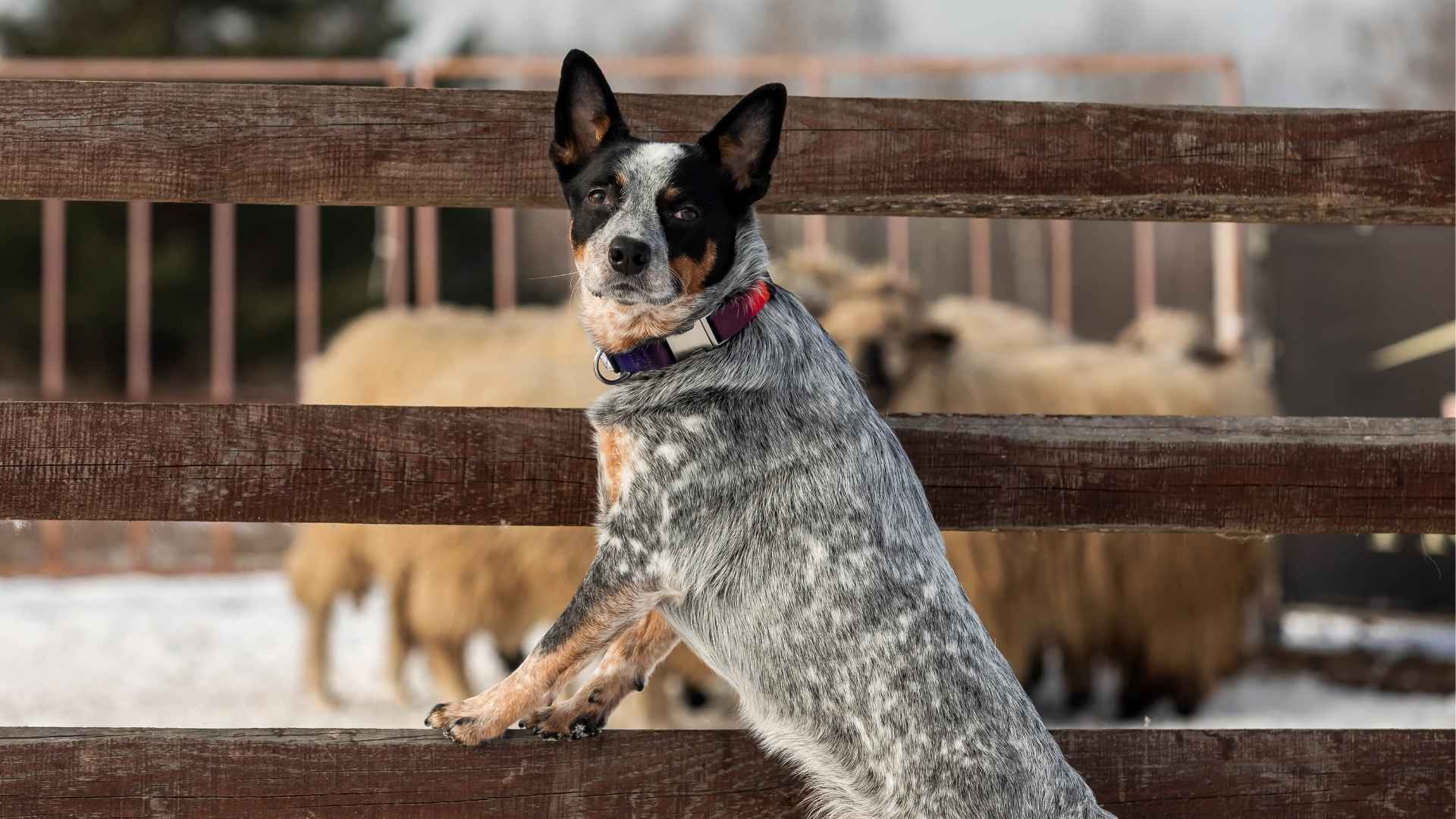Dogs have worked alongside humans for centuries, and few roles showcase that partnership better than herding. Across farms and fields, herding breeds are trusted partners, guiding flocks and keeping livestock safe with remarkable skill and instinct. These dogs aren’t just helpers—they’re indispensable to farmers, managing everything from sheep and cattle to poultry with precision and dedication.
From the wide-open plains to rugged mountain pastures, herding dogs adapt to every landscape and climate. Some, like Border Collies, control movement with an intense gaze, while heelers such as Australian Cattle Dogs push livestock from behind. Others, like German Shepherds and Briards, are tending breeds, guiding animals to graze safely while preventing strays. Each herding style reflects generations of careful breeding and training.
In this article, we’ll explore dog breeds that continue to be invaluable on farms today. Whether it’s corralling sheep, moving cattle, or simply providing companionship in the fields, these dogs prove that herding is more than a job—it’s in their DNA.
Dog Breeds That Help Farmers With Herding
1. German Shepherd
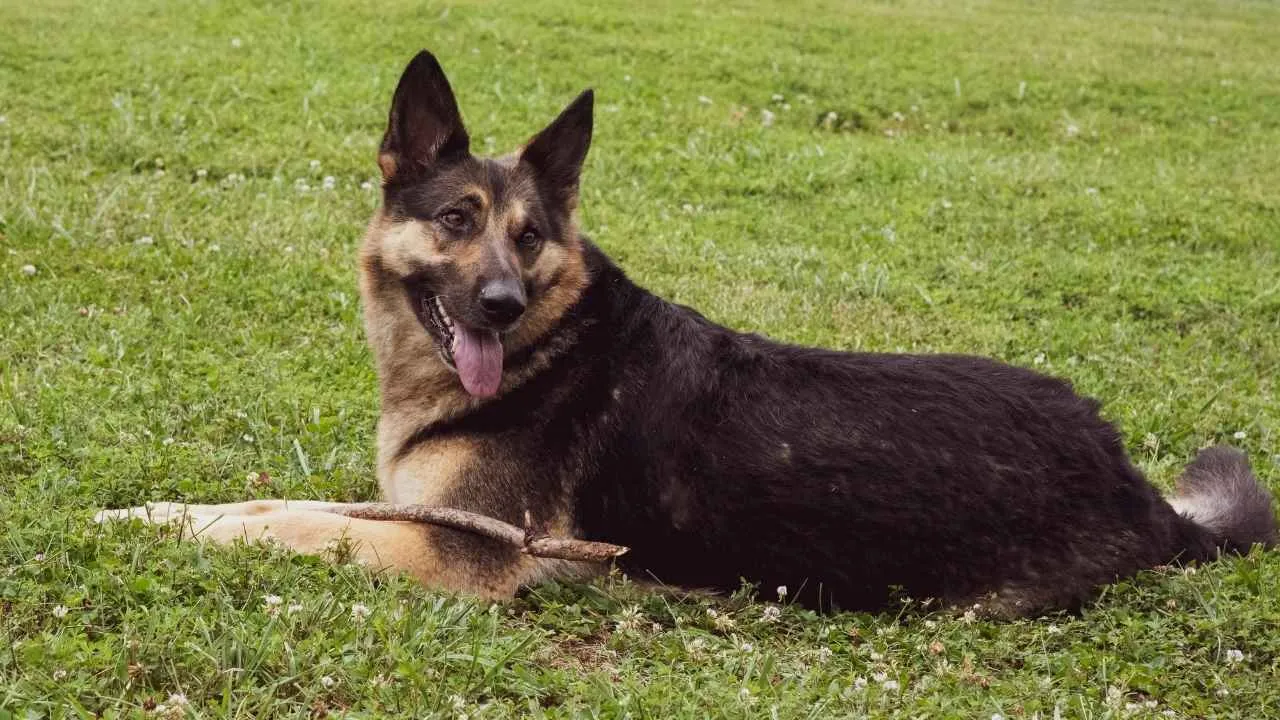
The German Shepherd, often called the “all-purpose worker,” is one of the most iconic herding breeds in the world. Originating in Germany in the late 19th century, these dogs were bred for intelligence and versatility, excelling at managing sheep and protecting farms.
Standing 22 to 26 inches tall and weighing 50 to 90 pounds, they’re muscular, agile, and known for their noble bearing. Their medium-length double coat comes in black and tan, black and red, or solid black, and they typically live 7 to 10 years. Chewy notes that they excel when they receive proper training and are rewarded for completing tasks.

Exercise
German Shepherds are high-energy dogs who thrive on activity. They need one to two hours of daily exercise, including brisk walks, structured training, and mental challenges to prevent boredom and frustration.
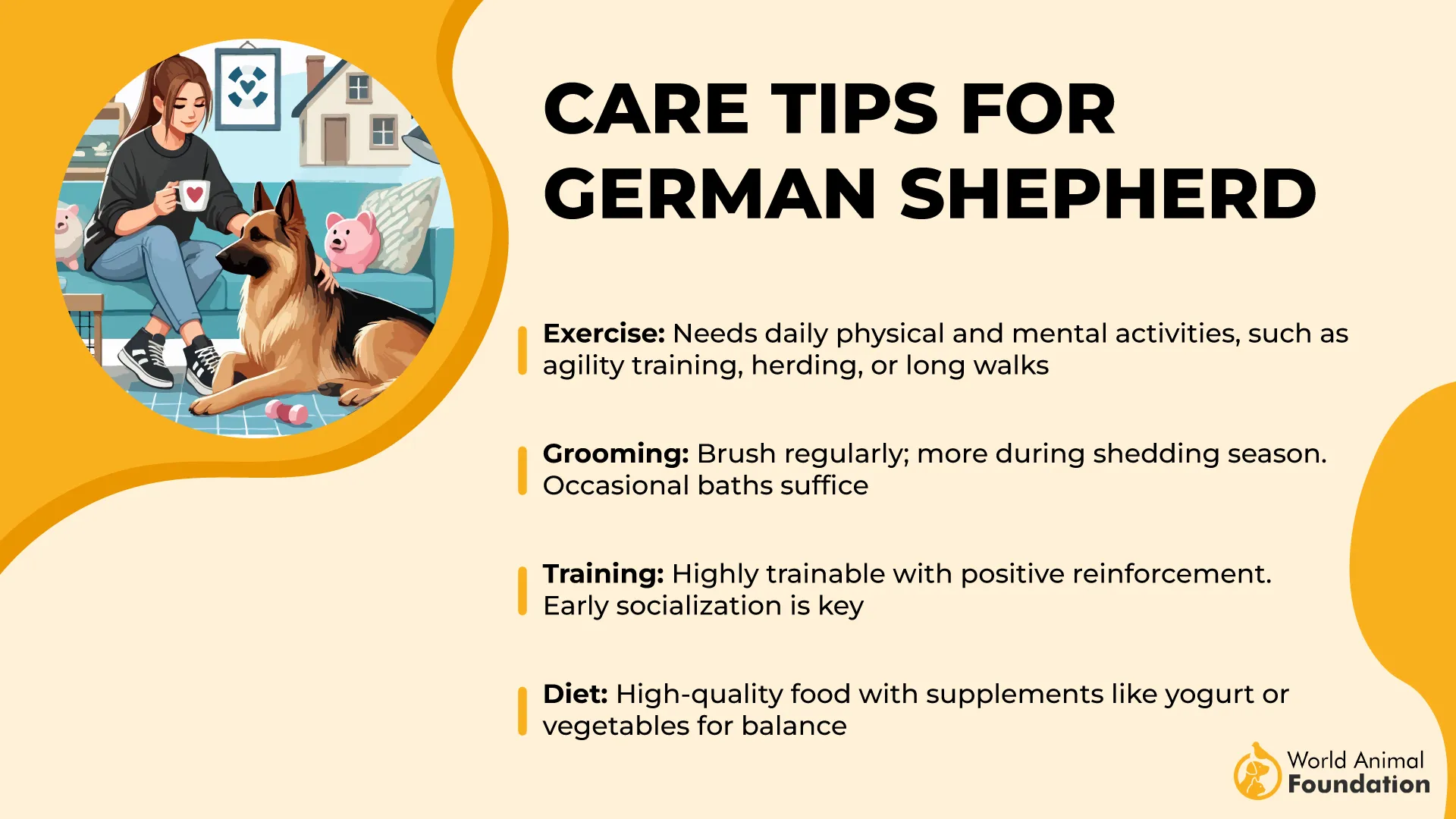
Their herding instincts make them eager to work, so farm tasks, agility drills, or even interactive games keep them engaged and well-behaved. Without consistent exercise, they can develop unwanted habits like chewing or excessive barking.
Fun fact: During World War I, German Shepherds shifted from farm work to military service, cementing their reputation as one of the world’s most dependable working dogs.
2. Briard
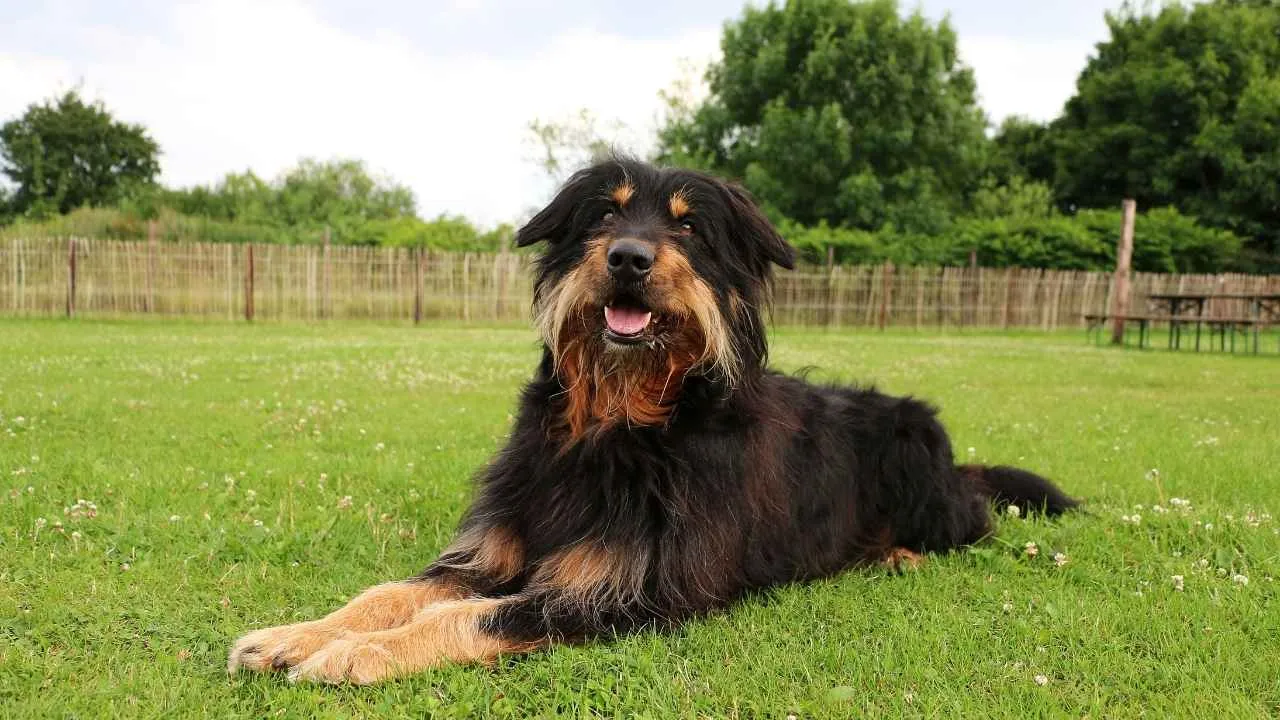
The Briard, also known as the Chien Berger de Brie, is a majestic French herding dog with roots dating back to the 8th century. PetMD states that Briard dogs were originally bred to both guard and herd sheep, and they are remarkably well-suited for this job.
Male Briards stand between 23–27 inches tall, while females range from 22–25.5 inches, and they weigh 55 to 100 pounds. Their long, wavy double coat—found in colors like black, gray, tawny, or blue—gives them a striking, almost romantic silhouette, complete with a natural part down the middle and distinctive “peek-a-boo” bangs.
Known as a “heart wrapped in fur,” the Briard blends ruggedness with elegance and remains a dedicated working dog and affectionate family companion.
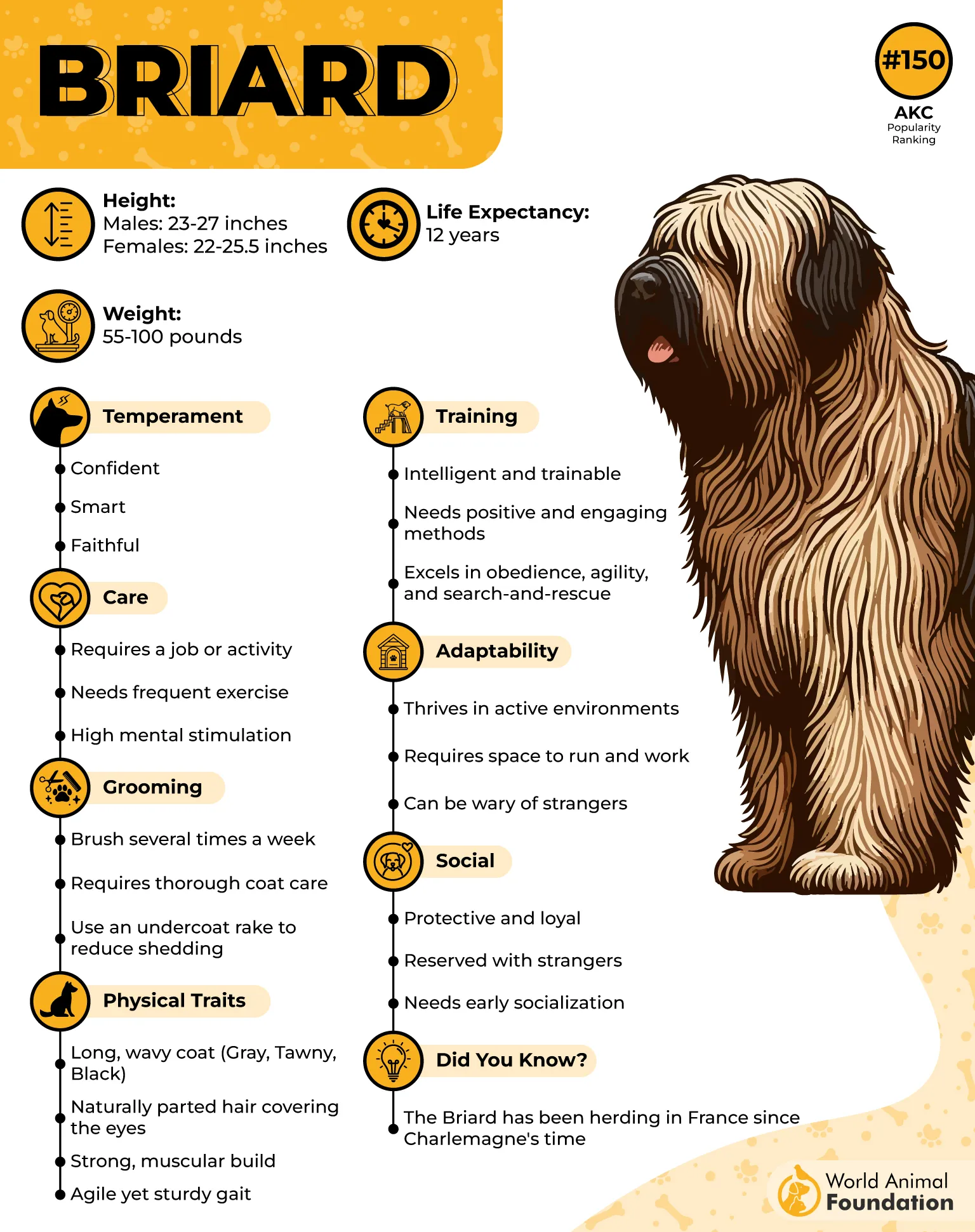
Exercise
Briards thrive on purposeful activity and require 60–90 minutes of exercise daily to stay healthy and content. A combination of brisk walks, free running, and structured tasks—like herding games or even swimming—keeps them mentally and physically stimulated.
They are happiest when given a “job” to do, whether it’s practicing obedience commands or joining you on hikes. Without sufficient exercise and mental engagement, a Briard can grow restless, leading to unwanted behaviors.
Fun fact: Just two or three Briards are said to be capable of managing an astonishing 700 head of sheep on their own.
3. Shetland Sheepdog
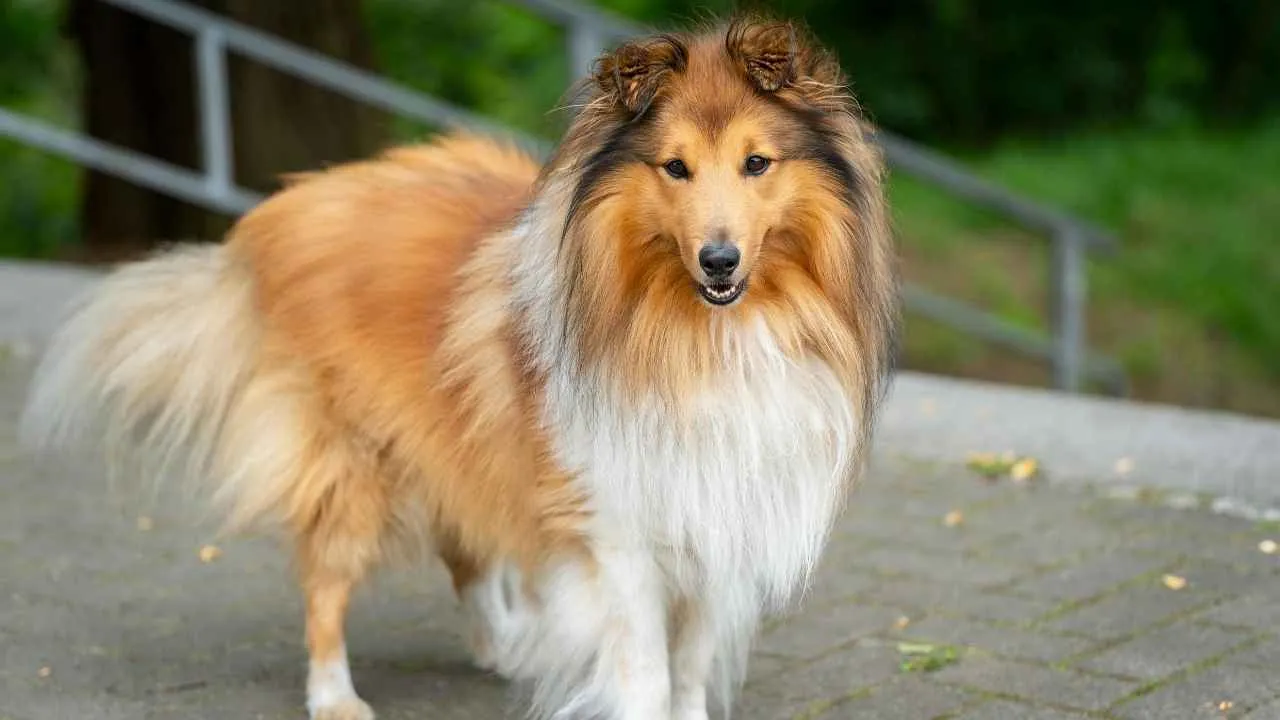
The Shetland Sheepdog, affectionately called the Sheltie, is a small but highly capable herding breed from Scotland’s rugged Shetland Islands. Standing 13–16 inches tall and weighing 15–25 pounds, these agile dogs resemble a miniature Collie but carry their own distinct charm.
Due to their dense double coat, they are built to endure the harsh northern climate. The AKC notes that their long coat is coarse and straight, with a thick undercoat, and is found in black, blue merle, and sable, accented by white markings.
Their intelligence, loyalty, and eagerness to please have made them valued working partners for farmers for generations, excelling at guiding sheep and other livestock while remaining gentle and affectionate with their families. Known for being watchful and vocal, Shelties also serve as excellent watchdogs, alerting their owners to any unusual activity.
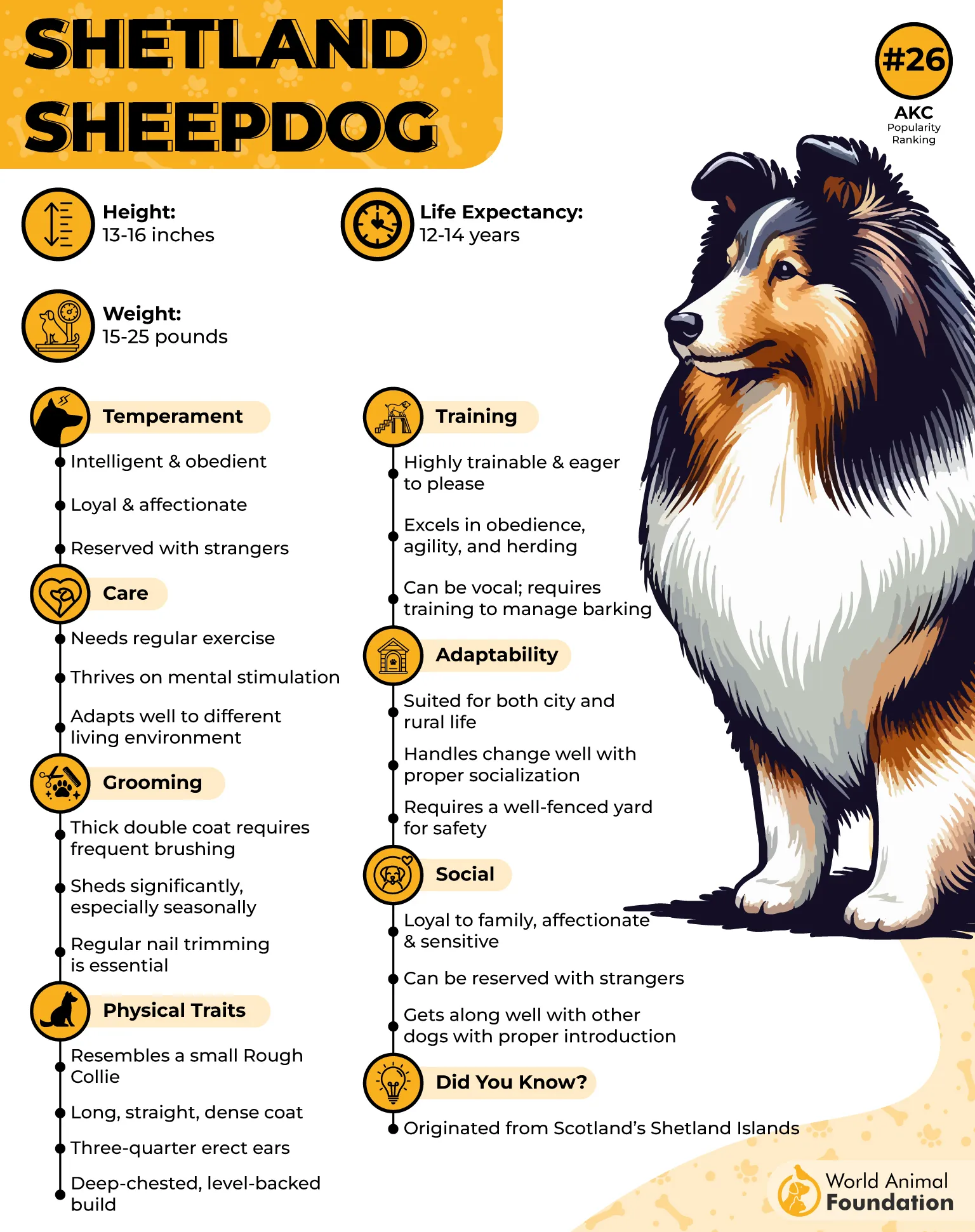
Exercise
Shelties are energetic dogs that need at least an hour of daily exercise to stay content and well-behaved. A mix of playtime and mentally stimulating activities like interactive games is ideal.
Their herding background means they thrive on having tasks to complete, so engaging their minds is just as important as physical activity.
Fun fact: Despite their smaller size, Shelties are renowned competitors in obedience and agility trials, often outshining much larger breeds.
4. Icelandic Sheepdog
The Icelandic Sheepdog, also known as the Icelandic Spitz or Íslenskur fjárhundur, is Iceland’s only native dog breed, tracing its roots back over 1,000 years to Viking settlers. With their foxy face, alert ears, and plumed tail curling over their back, these medium-sized herders have an unmistakable Nordic charm.
Standing 17–18 inches tall and weighing 25–30 pounds, they’re sturdy enough for rugged farm work but friendly enough to be a family favorite.
Their double coat—ranging from black and white to tan or chocolate—provides insulation against harsh climates, while their bright, watchful eyes reveal their eagerness to work. With a lifespan of 12–14 years, Icelandics bring decades of companionship and boundless energy to any home.
Exercise
Icelandic Sheepdogs are happiest when they’re on the move. They thrive on daily walks, hikes, and free play in open spaces, needing at least an hour of activity to stay balanced. Puzzle toys and obedience games can keep their intelligent minds engaged. Apartment living isn’t ideal—they love open land and opportunities to roam safely.
Fun Fact: Icelandic Sheepdogs still look skyward and bark at birds, a quirk inherited from centuries of guarding flocks from winged predators.
5. Old English Sheepdog
The Old English Sheepdog, affectionately nicknamed the “Bobtail,” is instantly recognizable by its shaggy double coat and distinctive bear-like gait. Emerging in 19th-century England, this large and powerful dog was originally bred to drive cattle and sheep to market, excelling in stamina and dependability.
Males typically stand 21 inches or taller and weigh between 60 to 100 pounds, while females are slightly smaller. Their dense coats come in colors like blue and white or gray and white, often obscuring their expressive eyes beneath their signature “peek-a-boo” fringe.
Despite their size, Old English Sheepdogs are known for their gentle, sociable nature, making them loyal family companions as well as skilled workers. They generally live for 10 to 12 years and belong to the Herding Group.
Exercise
Though they may look like laid-back shaggy giants, Old English Sheepdogs require around two hours of exercise daily to remain happy and healthy. This includes long walks, off-leash play in safe areas, and interactive games that stimulate their minds as well as their bodies.
Their playful temperament makes activities like hiking enjoyable outlets for their energy. Keeping their exercise routine consistent is essential—without it, they may become restless or mischievous.
Fun fact: An Old English Sheepdog’s dramatic coat once earned it use in early films, where they were often cast as the quintessential “shaggy dog.”
6. Australian Cattle Dog
Known for their grit and intelligence, the Australian Cattle Dog—often nicknamed Blue Heeler, Red Heeler, or Queensland Heeler—is one of the toughest herding breeds around. Bred in Australia from a mix of Collies, Dalmatians, and Dingoes, these compact but muscular dogs were developed to drive cattle across harsh Outback terrain.
Standing 17 to 20 inches tall and weighing 30 to 50 pounds, they boast a smooth double coat in striking shades of blue or red with speckled or mottled patterns.
Their sharp mind, unmatched endurance, and strong work ethic make them indispensable farm companions. The American Kennel Club recognizes them in the Herding Group, and their lifespan typically ranges from 12 to 16 years.
Exercise
Australian Cattle Dogs are true dynamos—they require over two hours of physical activity daily to stay balanced. Long runs, farm work, or dog sports like agility and herding trials are ideal ways to channel their boundless energy.
Mental stimulation is equally crucial; puzzle games and varied tasks prevent boredom and mischief. Without enough structured exercise, these high-energy dogs can become restless and destructive.
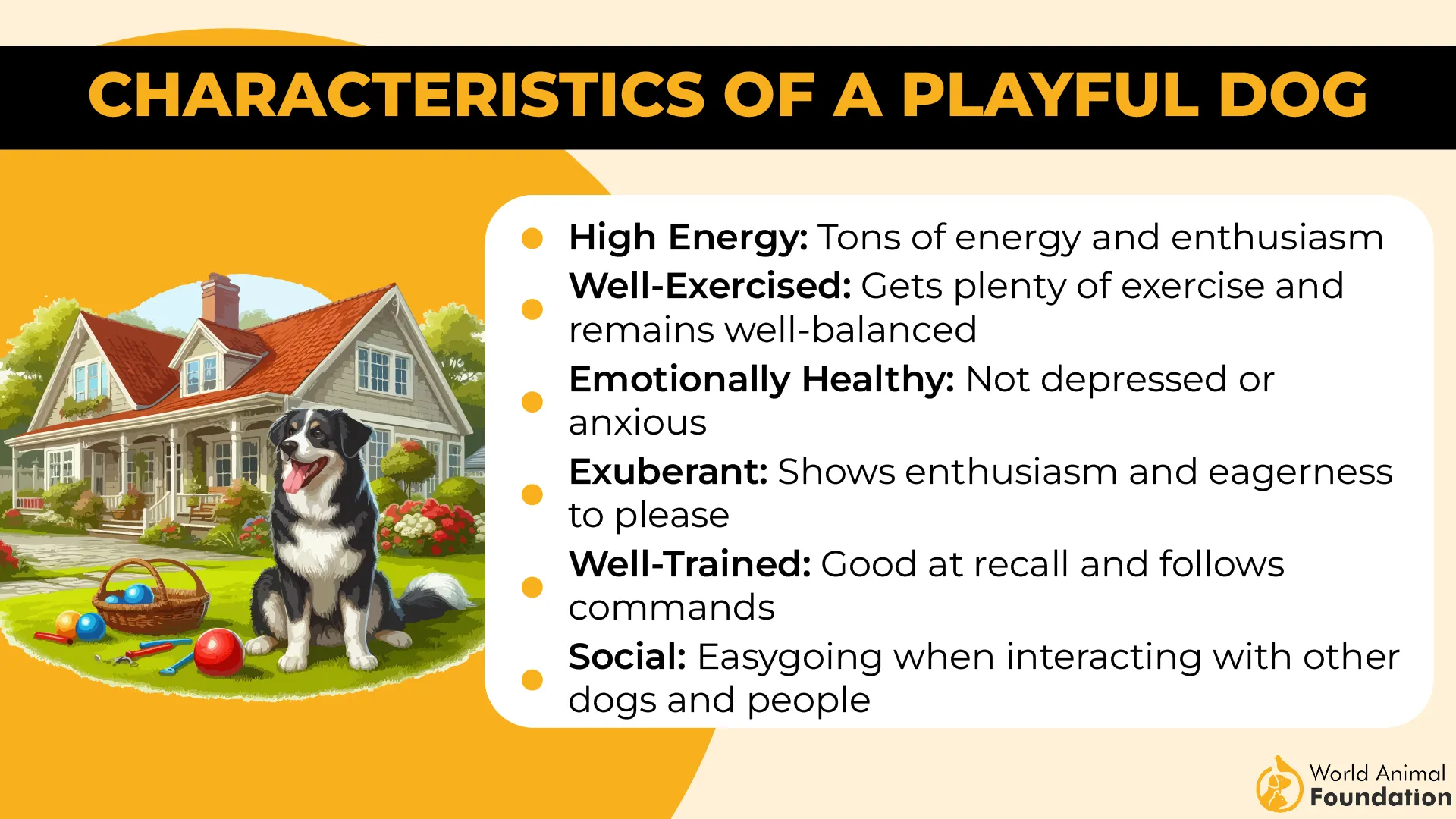
Fun fact: These “Heelers” got their name from their habit of nipping at cattle’s heels to keep herds moving across the Australian Outback.
7. Bearded Collie
The Bearded Collie, affectionately known as the “Beardie,” is a herding dog with roots tracing back to the misty hills of Scotland. This lively breed was originally relied upon by farmers to drive cattle and sheep, using its intelligence and boundless energy to manage livestock with ease.
Standing between 20 to 22 inches tall and weighing 45 to 55 pounds, the Beardie is a medium-sized dog with a lean, athletic frame built for long days in the field.
Its most striking feature is its long, shaggy double coat, which comes in shades like black, blue, brown, or fawn, and gives the breed its iconic windswept look. With a lifespan of 12 to 14 years, the Bearded Collie is as enduring as it is endearing, combining a bright, clownish personality with a reliable work ethic.
Exercise
Bearded Collies thrive on activity and mental stimulation. These high-energy herders require one to two hours of exercise daily, including long walks, off-leash play in a secure area, and problem-solving games to keep their minds sharp.
Fun fact: Just a handful of Bearded Collies are said to be capable of handling entire flocks of cattle or sheep on their own, proving their legendary herding prowess.
8. Beauceron
The Beauceron is a commanding and powerful herding breed from the La Beauce region of France, renowned for its intelligence and versatility. Standing 24 to 27.5 inches tall and weighing 70 to 110 pounds, this is France’s largest sheepdog, originally bred to herd and guard livestock.
Their striking black-and-tan coats, sometimes harlequin-patterned, and the distinctive double dewclaws on their hind legs set them apart.
Known for their protective yet composed demeanor, Beaucerons transitioned seamlessly from farm work to roles as police and military dogs, showcasing their adaptability and sharp instincts. With a lifespan of 10 to 12 years, they remain a steadfast companion for those who can match their energy and leadership needs.
Exercise
A healthy adult Beauceron requires two to three hours of vigorous exercise daily. This means more than just walks—they thrive on long runs, bike rides, and challenging hikes that engage both body and mind.
Consistent training and mental stimulation are essential, as idle Beaucerons may develop destructive habits from boredom. Their herding heritage gives them remarkable stamina, and they excel when given purposeful activities or advanced obedience drills.
Fun fact: The Beauceron’s red-tan feet earned them the French nickname Bas-Rouge, meaning “red stockings.”
9. Belgian Malinois
The Belgian Malinois is an energetic and intelligent herding dog, originally bred in Belgium and renowned for its versatility. Closely resembling the German Shepherd but leaner and more agile, this breed stands 22 to 26 inches tall and weighs 40 to 80 pounds.
With a short, easy-to-maintain coat in fawn, mahogany, or red tones paired with a signature black mask, the Malinois belongs to the Herding Group and enjoys an impressive lifespan of 14 to 16 years.
Initially bred to herd sheep, they’ve evolved into multifaceted working dogs, now excelling in military, police, and search-and-rescue operations, all while maintaining their herding instincts.
Exercise
The Belgian Malinois thrives on activity and mental engagement—it’s not a breed for sedentary households. They need at least 40 minutes of vigorous exercise daily, ideally with their owner actively involved.
Activities like agility training, herding trials, and tracking challenge both their body and mind. Without enough stimulation, Malinois can become bored, leading to destructive behavior or anxiety.
Fun fact: Many Belgian Malinois serve alongside elite military units, including Navy SEALs, showcasing their unmatched drive and capability.
10. Bouvier des Flandres
The Bouvier des Flandres, whose name translates to “Cow Herder of Flanders,” is a powerful herding dog breed originating from northern France and Belgium. These rugged, broad-chested dogs once worked tirelessly on farms, driving cattle, pulling carts, and even serving as message carriers during World War I.
Standing 23.5 to 27.5 inches tall and weighing 70 to 100 pounds, Bouviers are built with heavy bone and dense muscle, all beneath a weather-resistant double coat in shades of brindle, fawn, or gray.
With a life expectancy of 10 to 12 years, they combine strength with surprising agility, making them exceptional farm helpers and devoted companions. Their signature “beard and mustache” gives them a wise, almost dignified expression that matches their loyal and steady nature.
Exercise
The Bouvier’s high energy and strong work ethic mean they need at least 1.5 to 2 hours of daily activity. Jogging and engaging in games like fetch keep their bodies strong and minds sharp.
True to their heritage, they thrive when given a job, whether it’s herding trials or simply accompanying their owners on outdoor adventures. Without proper exercise, Bouviers can become restless, so active owners are essential.
Fact: During World War I, Bouviers served as fearless dispatch carriers and ambulance dogs, showcasing their intelligence and bravery.
Conclusion
On farms across the world, the right dog can make the difference between chaos and calm. Generations of selective breeding have given us remarkable farm dog breeds that instinctively know how to move, protect, and manage livestock. From nimble shepherd’s dogs guiding sheep to steadfast livestock guardian dogs keeping watch over herds, these companions are more than pets—they are partners in the day-to-day work of rural life.
Among the most admired are also the Australian Shepherd and Catahoula Leopard Dog, both known for their ability to herd cattle with precision and intelligence. But they’re far from alone—a few breeds and other herding breed lines have been developed to handle everything from sheep to goats to ducks. Whether managing sprawling fields or small homesteads, these dogs embody the blend of instinct and loyalty that farmers have relied on for centuries, making them indispensable to those who live and work the land.


